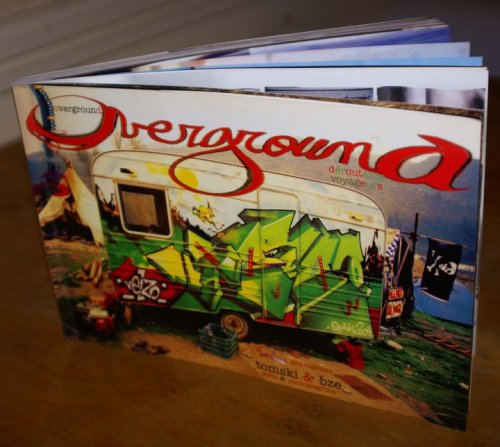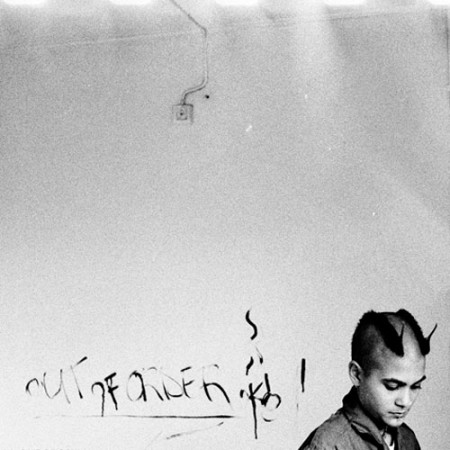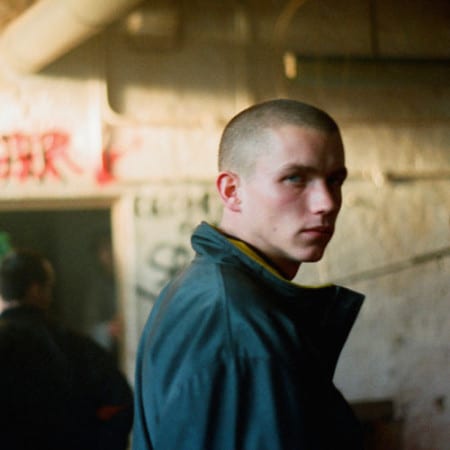NO SYSTEM Vinca Petersen (Steidl)
Vinca travelled around with various teknotypes in the mid-1990s. A lot of these snaps feel like holiday fotos and she's really good at capturing the freedom of being in a convoy of trucks drifting around Europe. Good times.
There's a fotodisplay from the book and more stuff on her website. You can buy it from her for a tenner or for £250 on amazon!!!
3672 - La Free Story
A French book, quite glossy made by some people associated with Paris sisdem Trouble Fete, a journalist and a professional photographer. Lots of flyers. I can't vouch for the texts, I haven't got round to reading them but the fotos are excellent quality and weird stylistically. There's no speakers, no people dancing, just lots of people asleep and/or wearing baggy trousers. But, as a document of a scene which had lots of people asleep or muntering horizontally, it does convey the feeling of being at a rave in the morning with a lot of done in people.
It was available here for free but the author got it taken down.
No System, que l'on doit à Vinca Petersen, fut le premier recueil iconographique sur une tribu de "traveller" (Total Resistance).
Wilfrid Estève, photographe ayant sévit au côté de T. Colombié (Technomades - la piste électronique, Stock) a eu la bonne idée de conserver sur pellicules une partie des soirées et festivals auxquels il a assisté en France.
L'esprit libre et contestataire de ce mouvement musical nous est restitué par le texte emprunt d'ethnologie de Sarah de Haro.
Cet ouvrage participe d'une meilleure compréhension d'un phénomène dont les médias n'ont traité que les dérives (consommation de produits psychotropes, nuisances diverses etc.).
Il est à noter qu'il se fait l'écho du travail de réduction des risques mené, entre autres, par Médecins du Monde ; Techno + etc.
SONiQUE VILLAGE by C. Van Bezouw (Self-published)
Christel made this nook in edition of 500, i think. The feel with this one is a group of friends growing up, going to parties then putting them on themselves (which is what it is, it's ZMK family). There's a lot of atmospheric fotos at parties and doodles suggesting the altered states and weird thoughts that the quicksilvermix of sound and drug can pull out of nowhere. I like it. [The title is French but it's Dutch, but there's no text]
Overground by Tomski and bze (editions alternatives)
Met the two people who made this when they stopped at our squat in Robodam. It's a strange mix of counterculture wiht lots of fotos of protests, peircings, parties, porn and so on. The texts in French are pretty impenetrable, lots of slang i guess.
Paname san dessus dessous! by Frotte Canard (Colours Zoo)
A book documenting the Saoulaterre people who do parties in the catacombs under Paris.
Brand new book devoted to the underground Paris and its legendary life of the Catacombes.
Made by the FC, a crew of graffiti artists and musicians, "Paname Sans Dessus, Dessous", with none censorship, is a hallucinating dive into this world always and still alive, according to their motto "DONT STOP ACTIONZZZZ ".
OUT OF ORDER by M.Macindoe (Tangent)
Molly's book documenting seven years of the London squat party scene. I went to a lot of these parties but remember them rather differently. These fotos present quite a dark, macho image of squatparties. That was certainly part of it but we had a lot of fun too.
Guardian
I like the way all these books focus on different facets of parties, and none are made as I would make them. Sonique Village is like an art book, handbound and is full of memories. Out of Order is pretty bleak, but reminds me of the power of a full-on London multi-rigger. No System tempts me to go travelling. Paname reminds me of the time I nearly went to a catacomb rave at Xmas then we lunched it and everyone got arrested and harrassed by French cops. 3672 shows the power of the French scene as it was, and I guess Overground does too.










